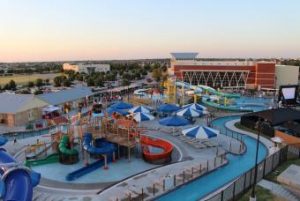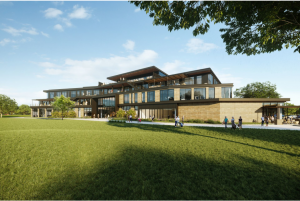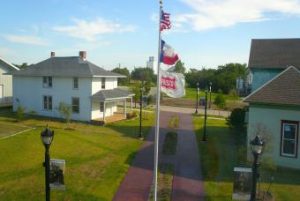Dallas

Discover the Community
Texas history and American history go hand in hand, and Dallas is home to many museums and organizations that take great pride in preserving this history. The Dallas Public Library is one of the few locations where visitors can see an original copy of the Declaration of Independence that was printed on July 4, 1776.
Dallas’ early economic history revolved around agriculture, Native American trade, and the stockyards of Fort Worth. A key element to the city’s growth accorded around 1873 with the development of multiple railroad lines that turned the city into the focal point of western commerce. The Dallas area became the economic hub for the southern United States and became a major player in Texas cotton production, and eventually oil in the 1930s.
After World War II, the city became the focal point of the telecommunications revolution that led to the development of the first microchip. This breakthrough in technology allowed Dallas to create a Telecom Corridor that is still home to thousands of technology companies that benefited from the development of microchips.
The city has a long and important history, but its most well-known historical event was the tragedy that occurred on Nov. 22, 1963. The assassination of President John F. Kennedy shocked the nation, and residents and visitors of Dallas can learn about the history of the JFK assassination in the Sixth Floor Museum.
Texas history and American history go hand in hand, and Dallas is home to many museums and organizations that take great pride in preserving this history. The Dallas Public Library is one of the few locations where visitors can see an original copy of the Declaration of Independence that was printed on July 4, 1776.
Dallas’ early economic history revolved around agriculture, Native American trade, and the stockyards of Fort Worth. A key element to the city’s growth accorded around 1873 with the development of multiple railroad lines that turned the city into the focal point of western commerce. The Dallas area became the economic hub for the southern United States and became a major player in Texas cotton production, and eventually oil in the 1930s.
After World W
Texas history and American history go hand in hand, and Dallas is home to many museums and organizations that take great pride in preserving this history. The Dallas Public Library is one of the few locations where visitors can see an original copy of the Declaration of Independence that was printed on July 4, 1776.
Dallas’ early economic history revolved around agriculture, Native American trade, and the stockyards of Fort Worth. A key element to the city’s growth accorded around 1873 with the development of multiple railroad lines that turned the city into the focal point of western commerce. The Dallas area became the economic hub for the southern United States and became a major player in Texas cotton production, and eventually oil in the 1930s.
After World War II, the city became the focal point of the telecommunications revolution that led to the development of the first microchip. This breakthrough in technology allowed Dallas to create a Telecom Corridor that is still home to thousands of technology companies that benefited from the development of microchips.
The city has a long and important history, but its most well-known historical event was the tragedy that occurred on Nov. 22, 1963. The assassination of President John F. Kennedy shocked the nation, and residents and visitors of Dallas can learn about the history of the JFK assassination in the Sixth Floor Museum.
ar II, the city became the focal point of the telecommunications revolution that led to the development of the first microchip. This breakthrough in technology allowed Dallas to create a Telecom Corridor that is still home to thousands of technology companies that benefited from the development of microchips.
The city has a long and important history, but its most well-known historical event was the tragedy that occurred on Nov. 22, 1963. The assassination of President John F. Kennedy shocked the nation, and residents and visitors of Dallas can learn about the history of the JFK assassination in the Sixth Floor Museum.
Demographics
Dallas School District
The Dallas Independent School District sits in the heart of a large, diverse and dynamic region with a metropolitan population of 6.5 million people in the 12 counties in North Central Texas. Dallas ISD comprises 384 square miles and encompasses the cities of Dallas, Cockrell Hill, Seagoville, Addison, Wilmer, Hutchins and parts of Carrollton, DeSoto, Duncanville, Farmers Branch, Garland, Highland Park, Lancaster, Mesquite, Balch Springs, and Combine. The district is the second-largest public school district in the state and the 16th-largest in the nation.
Innovation, tenacity, vision and equity are key drivers that have shaped Dallas ISD into one of the area’s most prominent and forward-looking school districts. Advances such as pay for performance, college and career education programs and public school choice—all of which began more than a decade ago—are taking the district to the next level.
Our evolution is grounded in a strong focus on correcting historic injustices and ensuring that all students are served fairly. Dallas ISD is dismantling inequities through budget reallocations, unconscious bias training for staff, advocacy for digital access in underserved communities and increased diversity in our teacher ranks.
We are proud of our award-winning schools, outstanding teachers and staff, committed parents and volunteers who comprise the dedicated team that serves approximately 145,000 students in pre-kindergarten through 12th grade, in 230 schools, served by 22,000 dedicated professionals.













